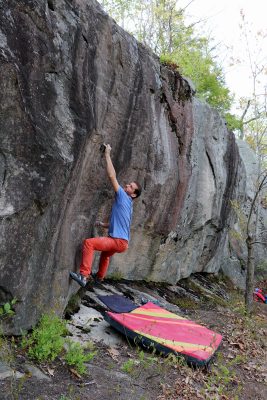Putnam County Land Trust Acquires Ice Pond Forest in Land Swap
News Based on facts, either observed and verified directly by the reporter, or reported and verified from knowledgeable sources.
By Michael Gold

The Putnam County Land Trust (PCLT) recently acquired 70 acres of forest bordering its Ice Pond property in a land swap with a local developer who is planning to build 24 homes near trust-owned land.
“We’re protecting areas important to our community, particularly ridgelines,” said Patterson Supervisor Richard Williams Sr. at the Nov. 18 ribbon-cutting ceremony celebrating the acquisition. “It is Patterson’s town policy to cluster subdivisions and protect land.”
The Ice Pond is part of the Great Swamp, a 4,000-acre, 20-mile-long area of wetlands that extends through eastern Putnam and Dutchess counties, sheltering ducks and other waterfowl. The Ice Pond was named because local farmers in the 18th century harvested ice from the 42-acre water body. In the 19th century, private companies shipped ice from the pond to New York City and other areas.
“We made the trade to protect the most sensitive land,” PCLT President Judy Terlizzi said. The (land trust) is going to “find biotic corridors to preserve,” she said.
Jim Nordgren, a PCLT consultant, said with suburban sprawl fragmenting wildlife corridors, the goal of the swap also is to connect parks in Putnam County and prevent even greater loss of biodiversity.
This would mean linking various protected areas east to west across Putnam County, from the Ice Pond to Ninham Mountain to the California Hill State Forest to Fahnestock Park.
The PCLT will allow access to the property for bouldering, a form of rock climbing, on rocks that are about eight to 10 feet high, without ropes and harnesses. Boulderers use only climbing shoes and drying chalk rubbed onto their hands to climb rocks, with a crash pad – a foam mat – below them, in case of a fall.
The Ice Pond property has “three main areas of boulder fields,” said Gary Goldfinger, a New Rochelle native now living in California, who spent many years climbing the boulders.
Goldfinger, who is writing a guidebook to bouldering at the Ice Pond, said the area is special to many. The guidebook will provide information pertinent to boulderers, such as describing 325 different climbs, and feature brief descriptions of the flora, fauna, geology, human history and land ownership history of the area.
“We wanted to align the PCLT with recreational activities,” Goldfinger stated in an e-mail. “This is a good place for people to learn to climb. Boulders range in terms of all kinds of difficulties, making it a great place for beginners and experts alike.”
Goldfinger added that the quality of the highly textured rock is something that climbers like.
“Getting to the top without falling is the goal,” Goldfinger said. “It’s you versus the rock. We value the land just as much as they (PCLT) do.”
Terlizzi wrote in an e-mail that Ice Pond is bounded on two sides by significant peaks that have long welcomed birds to the habitat.
“These peaks have signaled for thousands of years to migratory birds and waterfowl that this is the entrance to the Great Swamp where food and rest can be found,” she explained. “One of the biggest concerns was that if the peak on the west side were developed, the lights and noises from such a site could impact and disturb bird migration.”
It was estimated by state Sen. Peter Harckham (D-Lewisboro), who also spoke at the ribbon-cutting, that as much as 60 percent of the county’s biodiversity has been lost. Acquisition of the land by the PCLT should help an assortment of plants and animals thrive, which people rely on, Nordgren said.
Plants produce oxygen to breathe and convert sunlight into food for humans and animals, he said. Insects pollinate these plants to let plants reproduce. Insects decompose and recycle dead plants and animals.
“Animals keep other animals in balance,” Nordgren said. “Predators like wolves, coyotes and bobcats kept deer populations in check. Without those predators, deer populations surged, and with it, Lyme disease, crop damage and car accidents. Bats keep mosquitoes in check. As bat populations decline, mosquitoes become more prevalent, spreading disease. Birds also keep insects in check.”
Trees also absorb carbon, produce oxygen, provide shade, store water and play a role in preventing flooding, he said.
“Land trusts are crucial to piecing critical parcels together,” Nordgren said, to provide “hospitable climates for species.”

Examiner Media – Keeping you informed with professionally-reported local news, features, and sports coverage.
